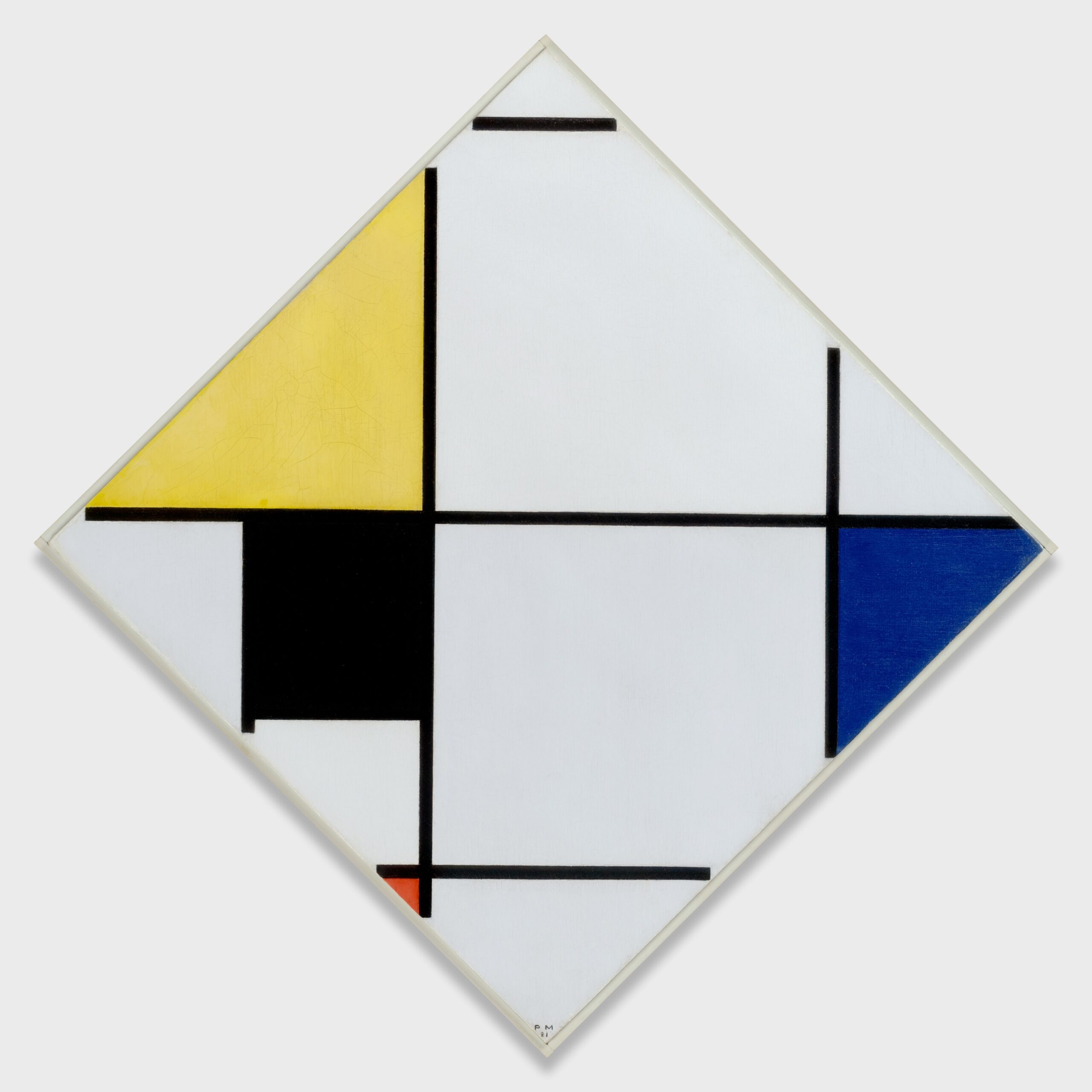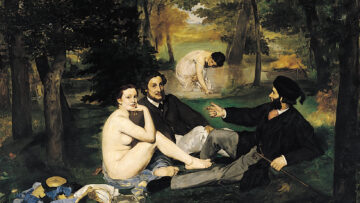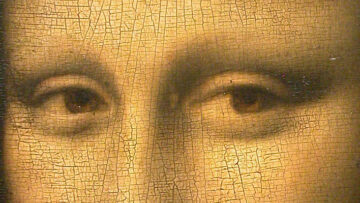Written by Saori Takeda: Publisher and Editor-in-Chief, ART Driven Tokyo

Lozenge Composition with Yellow, Black, Blue, Red, and Gray 1921
Gift of Edgar Kaufmann, Jr.
A reader asks: “I need a yardstick, like a deviation. I want to see and buy only art that everyone recognizes.”
“How do you differentiate between valuable contemporary art and the rest? Please enlighten us about the standards.”
Several readers have approached me with this query. One of them expresses a profound admiration for Impressionism, stating, “I’ve stood in lines at art museums with my family numerous times for appreciation.” They also enthuse about Vermeer’s “Girl with a Pearl Earring.” The painting has gained immense popularity in Japan owing to the success of the movie based on it.
However, they admit to having no understanding of contemporary art, dismissing abstract art as resembling children’s doodles. Upon learning that Warhol’s “Marilyn” was sold for over 195 million dollars, they conclude, “Warhol must be valuable,” basing their judgment on the universally comprehensible metric of money.
Another reader made a similar request, stating, “I want to see only the art that everyone claims is ‘valuable.’ If I were to make a purchase, I’d prefer something that has already been well-established. Therefore, please provide a standard, something like a deviation value that everyone can agree upon.”
I found myself at a loss. If exceptional works are deemed as such only if they meet clear-cut criteria, wouldn’t contemporary art stagnate as a mere extension of the past? When Duchamp presented a urinal as art, people were surprised and bewildered, leading them to contemplate deeply what “beauty” truly is. If such works cease to emerge or are no longer tolerated, wouldn’t that be detrimental?
Due to such circumstances, ART Driven Tokyo has decided to commence the series “What Makes Art Valuable?” Contemporary art, often perceived as aloof and incomprehensible, could be a strong suit for Japan if it aims to promote Cool Japan (the Japanese Government’s initiative to further strengthen the ties between Japan and other countries in such areas as economics, culture, and diplomacy). I wish to deliberate on this with all of you.
Impressionists, too, were heretics at first. “What is this?” People were surprised
While Impressionism is highly esteemed in Japan as “established and valued,” during the time of the Impressionist painters’ emergence, they were considered rebels in the art world. At the time, conservative salons dictated the direction of the art world. However, the invention of paint tubes and the ability for artists to paint outdoors transformed the scene. Previously, painters would recreate landscapes in studios upon returning from the field, leading to many unnatural elements in their landscape paintings. The color schemes were considerably somber and brownish.
Conversely, painting outdoors heightened the sensitivity of artists to light. As the light changed rapidly, painters had to work swiftly. Consequently, Impressionist paintings featured vibrant colors and rapid layering of hues. People at the salons back then might have viewed these works and thought, “It looks like they just splashed paint from their palette. These bright paintings seem too casual.” Notably, it was the commercial galleries that championed and promoted the recognition of Impressionism.
Impressionism, too, initially faced such scrutiny.
New York’s Legendary Gallerist: “Three Values” are Important: What Moves People’s Hearts and Instincts
Then, are there no “standards” at all? In Michael Findlay’s book “The Value of Art” (Prestel Publishing), a legendary New York gallery owner and a pioneer of the 1960s SoHo art scene, he mentioned three values that define excellent art. Thalia represents whether the artist’s technical skills are solid. Indeed, convincing works often possess a strong technical foundation.
Euphrosyne denotes the social value of art. Considering it’s “contemporary” art, it cannot be detached from the trends in society. Art that incorporates the era’s backdrop and societal issues, offering new insights and perspectives on them, tends to be highly regarded. Respecting and reflecting cultural identity and ideas are equally crucial. The currently popular Black Art, for instance, addresses racial issues.
Above all, Aglaea, one of the Three Graces in Greek mythology, signifies the most critical value. Michael Findlay describes this value as something “essential.” I would describe it as something that “moves the viewer’s heart, appealing to human instincts.”
Yayoi Kusama is loved by the Greek God of Beauty
Many admire Yayoi Kusama and make it a point to attend her exhibitions, but her critical acclaim surged after she crossed the age of 70. I don’t think Kusama’s works are easily understandable in a positive sense. Initially, people might be taken aback, wondering, “What are these polka dots?” Yet, it was precisely this element that garnered recognition in America. Kusama’s persistent use of polka dots resonates with the viewer’s instincts. “What are these polka dots?” As one continues to gaze, one might find oneself thinking, “Hmm, they are cute,” becoming captivated.
On the other hand, art devoid of value may be mere imitations or mere rehashes of existing ideas and styles. If art were to have “standards” like deviation values, it would likely give rise to works lacking creativity and novelty, failing to evoke new perspectives or emotions (such as surprise) in the audience.
At this point, those who consider themselves knowledgeable about art might say, “It’s not as easy to explain. It’s not that simple.” Art indeed has such dimensions. Nevertheless, ART Driven Tokyo’s philosophy is to foster contemporary art widely within us. Therefore, I choose to express it in a simplified manner.
Don’t worry, the curators at MoMA didn’t get it either
Please take a moment to look at Mondrian’s “Lozenge Composition with Yellow, Black, Blue, Red, and Gray” 1921, posted at the beginning. Mondrian remains impressively cool every time you behold his works. Although not the same piece, there is a work called “New York City I” at the Museum of Modern Art (MoMA) in New York. It consists of geometrically arranged adhesive tapes, making it difficult to discern its orientation. Since its initial display in the 1940s, it has been exhibited upside down because even the curators at MoMA couldn’t figure it out. Even 20th-century art is like this, contemporary art is profound, which is why I believe that it’s not about wanting to “understand” it but rather wanting to “feel” it.
Still, explore the clues. What is beauty?
During a seminar for journalists, a highly renowned Japanese contemporary artist mentioned, “I really enjoy purchasing other artists’ works, but sometimes the pieces I appreciate don’t receive as much recognition in the market. Even I don’t understand contemporary art.” Hence, dear readers, I urge you to go and see contemporary art without any reservations. Especially visit commercial galleries that introduce the works of emerging artists, right before thier works are collected by the museums.
I hope you see a lot. As you do, you’ll eventually become aware of Michael Findlay’s “three values.”



